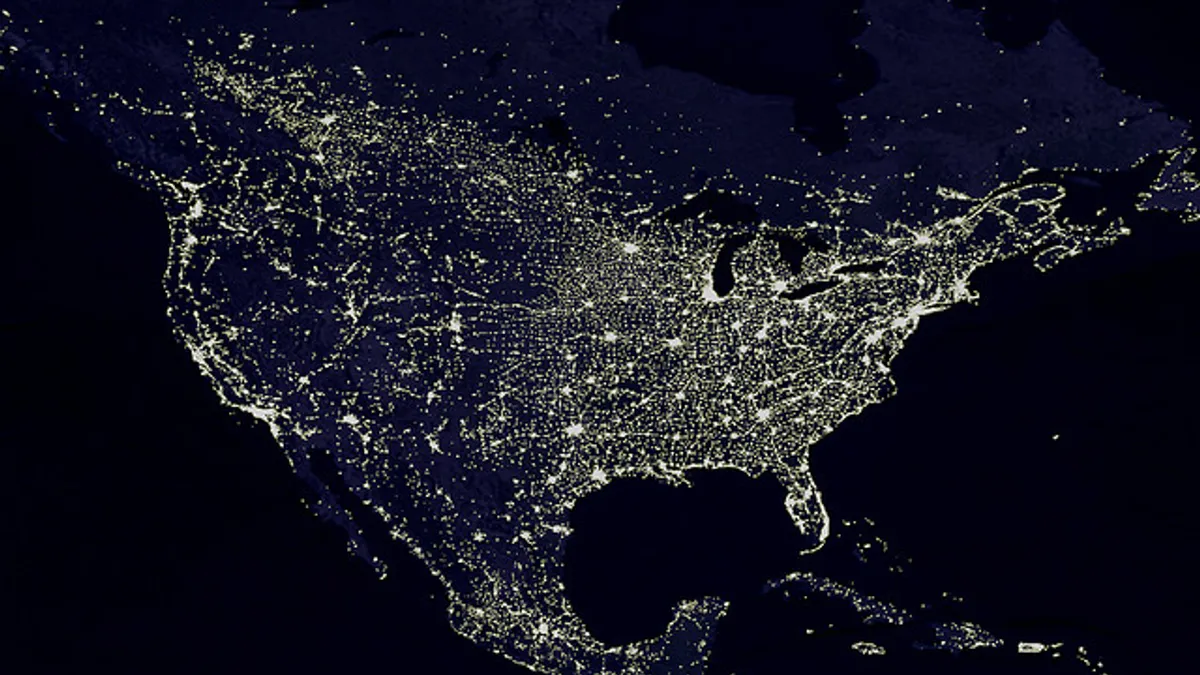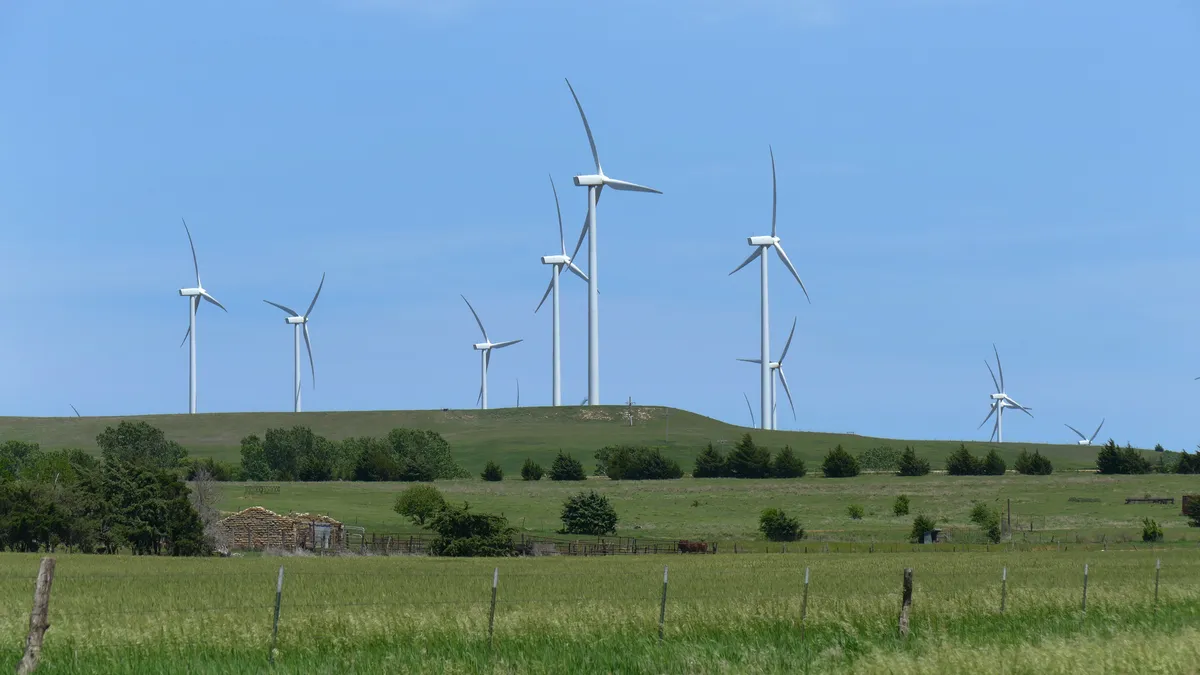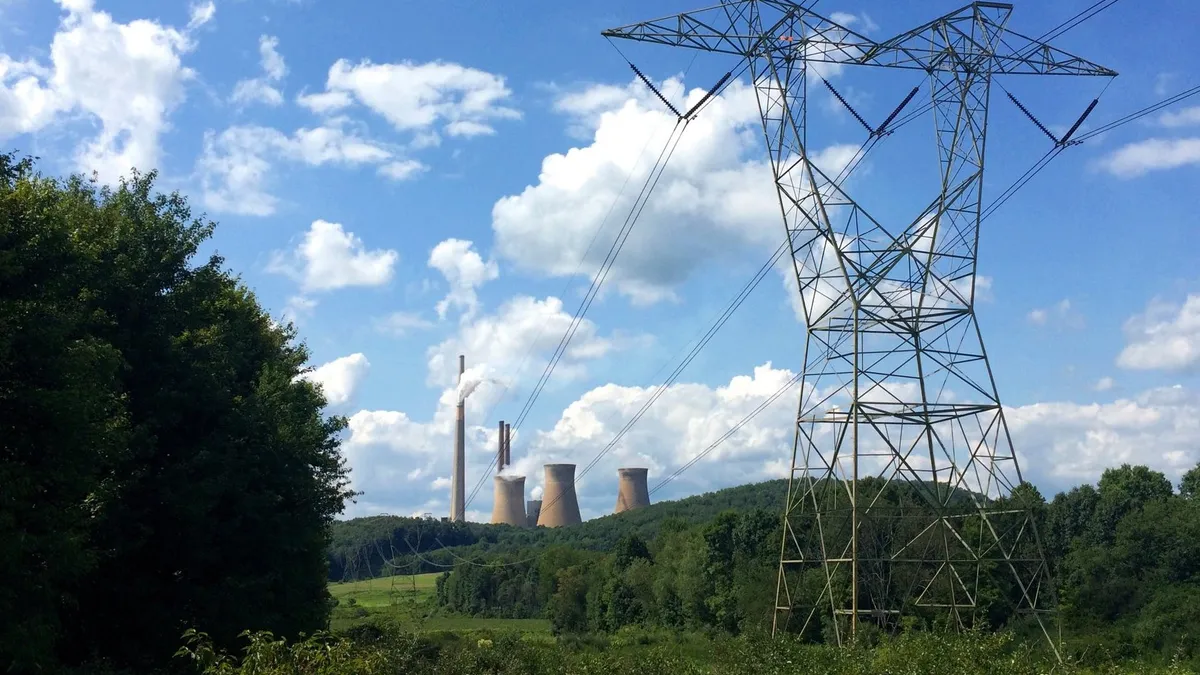We talked a lot about the challenges that utilities face in 2013, but how did the industry actually do?
No matter their size or region, utilities faced major common issues this year: modest to declining sales, plant retirements, renewable energy integration and evolving business strategies.
Utility Dive looked at five utility companies, ranging in size and region, to take the industry's temperature as 2013 draws to a close.
Here's what we found.
American Electric Power
Utility giant AEP is seeing electric demand fall across its service territories and, as a result, is signaling a shift in its business focus.
“We're pleased to see increases in the commercial load, primarily in Texas and Ohio, for the third quarter, but our residential and industrial load continues to be challenged," said Nicholas Akins, AEP president and CEO, during an October 23 conference call with analysts.

AEP is responding to what it sees as common changes in the utility business. “We believe our industry is no longer about just generation, transmission and distribution, but is focused on infrastructure investment, particularly in the transmission area and distribution, and the customer and employee experiences that include technological changes, and of course optimization of our portfolio of assets,” Akins said.
“And then also, the impact of distributed generation. Although it's pretty minimal in our territory, you think about those things. They're forcing functions for us to reform our business so that we can succeed in that kind of environment,” he said.
At the same time, AEP's power plant fleet is going through a major shift. AEP plans to retire 6,533 MW of coal capacity by 2017, representing 28% of the company's coal fleet, according to its most recent quarterly report filed with the Securities and Exchange Commission. AEP is converting to natural gas or installing emissions controls on another 4,884 MW of coal, the filing said.
AEP's issues mirror many of those faced by utilities across the country. EPA regulations are driving a shift in power supply while load growth faces serious challenges from both distributed generation and energy efficiency. As 2013 comes to an end, look for utilities to continue rethinking their strategies on these key issues in the next year.
NorthWestern Energy
NorthWestern Energy, serving electric customers in Montana and South Dakota, is poised to buy 633 MW of hydroelectric plants from PPL Montana for $900 million, significantly increasing its owned generation portfolio.

In a big plus for NorthWestern, the hydro assets have zero air emissions. "We'll increase our fuel diversity in Montana, that will be about 50% hydro or wind," said Robert Rowe, NorthWestern president and CEO, during an October 24 call with analysts. "We think these are the right assets and it's the right time for a transaction such as this, essentially no development risk."
Currently, NorthWestern's owned generation provides about 44% of the utility's power supply for its two-state electric service territory. After the deal is finished, NorthWestern will own about 69% of its supply, according to the company.
Electric sales dipped 0.8% in the first three quarters this year to 7.64 million MWh from 7.7 million MWh in the same period last year. Overall, NorthWestern is seeing increased economic growth in parts of its service territory, Rowe said. The utility expects to spend about $287 million over the next four years beefing up its distribution system, according to the company.
Hydro power isn't the sexiest resource, but it is effective, clean and not going anywhere anytime soon. A huge benefit of hydro power is that it can also be used to help integrate renewables -- for example, hydroelectric facilities can store water in reservoirs while the wind is blowing and release the water when the wind isn't blowing, thereby smoothing out the load curve.
NorthWestern's owned generation bet could pay off in the long run as the utility will have some very stable assets to leverage, and that's especially important in an industry that faces disruption. Look for how utilities make power supply decisions in 2014, and whether they simply sign power purchase agreements or bet on owning a particular resource.
Portland General Electric
Portland General Electric's (PGE) weather-normalized electric sales were flat in the third quarter and will likely be flat for the full year, said Jim Lobdell, PGE CFO, during an early November conference call with analysts. The utility had expected sales to grow by 0.5% to 1% this year. The company expects sales to climb next year by about 1%, mainly on industrial growth, Lobdell said, noting that data centers in Oregon are growing.

PGE has decoupling for its residential and small commercial customers, said Jim Piro, PGE president and CEO. The utility's extensive energy efficiency programs hold down power sales, he said.
“So that kind of reduces our load growth and kind of masks that there is actually growth going on which is being kind of overtaken or offset by energy efficiency by customers who are actually running a pretty aggressive LED in street lighting program right now, which is a real great cost effective program for our customers that reduces energy usage, but also provides an investment opportunity as we put those lights into service,” Piro said.
Like many U.S. utilities, much of PGE's load growth was mitigated by energy efficiency. Decoupling is one step in the right direction, but further incentives such as rate loss recovery mechanisms could help utilities thrive in an energy efficient world. Look for policy and regulation to continue shifting in that direction in 2014.
Southern California Edison
Southern California Edison (SCE) cut its 2012 electric sales by 1.8%, or 1.6 million MWh, in 2012, the company reported late October. However, SCE has a lower energy efficiency savings target of 900,000 MWh for this year and next year because the California Public Utilities Commission has identified a lower level of market potential for efficiency, according to the company.
Like other utilities, SCE plans major spending on its basic infrastructure. SCE expects to spend about $4 billion a year through 2017 on infrastructure projects, Jim Scilacci, Edison CFO, said during a late October earnings call. The utility expects to spend about $14.5 billion on distribution projects, $4.9 billion on transmission and $1.3 billion on generation over the next five years.

SCE is grappling with how to replace the 2,200-MW San Onofre nuclear plant that was unexpectedly retired earlier this year. “It's going to be energy efficiency, it's going to be [distributed generation], there could be additional transmission upgrades,” James Scilacci, CFO said. “So we're looking at the gamut along with a large group of folks from the [independent system operator] and the CPUC and other stakeholders, determining what's appropriate.”
The loss of San Onofre is a big issue for Southern California and SCE is planning to meet it with the same resources that come with that dreaded label: "disruptive." California leads the way on progressive energy policy, so it will be fascinating to watch how utilities in the region adapt to the rise of distributed solar and energy efficiency. Look for SCE and other California utilities to provide the rest of the industry with an early blueprint to learn and work from in 2014 and beyond.
Xcel Energy
Xcel Energy is forecasting little overall long-term electric sales growth from its utilities because of energy efficiency programs and the economy, company officials told analysts during an earnings call in late October.
Across the service territories of Xcel's utilities, which are centered on Colorado, Minnesota and Texas, retail sales fell 1.1% in the third quarter to 24.55 million MWh. Stripping out the effects of weather, third-quarter sales increased 0.3% in the third quarter and are up 0.1% in the first three quarters this year, said Teresa Madden, Xcel CFO.
Looking ahead, Xcel expects flat to 0.5% growth for this year and about half a percent for 2014, largely because of the weak economy and energy efficiency programs, according to Madden. Lower-than-expected retail sales have delayed the need to add power supplies in Colorado and Minnesota.
Even so, Xcel is adding about 1,900 MW of wind onto its system. When coupled with coal plant retirements, Xcel expects its carbon emissions to fall sharply.

Xcel is taking a proactive approach to the country's transition to a clean and sustainable energy future. Current and looming regulations will force the industry to minimize the use of fossil fuels, and Xcel is trying to stay ahead of the curve. Look to see whether other utilities follow Xcel's lead or dig in their heels in 2014. Expect key decisions on generation resources next year to have ramifications for years to come.
Looking ahead: 2014 and beyond
Fitch Ratings and Moody's Investors Service issued reports last week that highlight the challenges facing electric utilities.
“The electric industry faces stagnant growth prospects as the recent trend of declining per-capita consumption is expected to continue, if not accelerate,” Fitch said in its report. “Efficiency, driven by favorable economics and fostered by federal and state energy policies, will erode electricity sales for the foreseeable future. Consequently, growth prospects appear brightest in the Sun Belt regions, which have experienced the strongest economic growth.”
In its report, Moody's focused on public power utilities. “Slower growth in customer demand will make it harder for utilities to spread costs over a large customer base,” Moody's said. “However, it will also delay the need to finance new energy and capacity in order to meet growth.”
"Greater carbon regulation and advances in technology that threaten the monopoly utilities have on customers are long-term credit risks," says Dan Aschenbach, a Moody's Senior Vice President. "The more the pace of change accelerates, the greater the credit pressure on public power utilities and the need for them to adapt."
2014 is set to be a decisive year for the industry. If 2013 is any indication, we're going to have a lot to talk about.
Enjoyed what you read? You may also want to read Utility Dive's look at whether California is the roadmap to America's energy future.




















